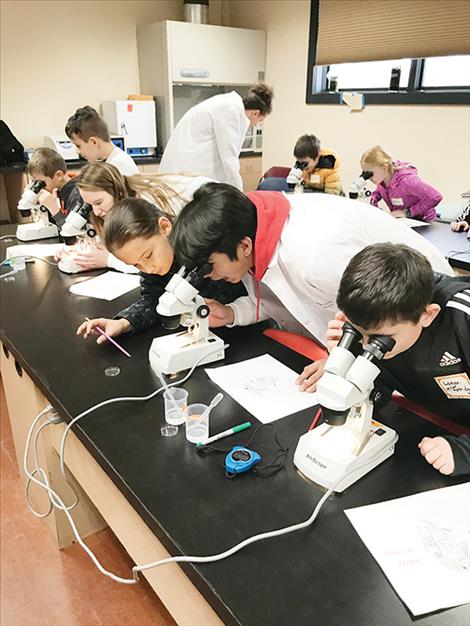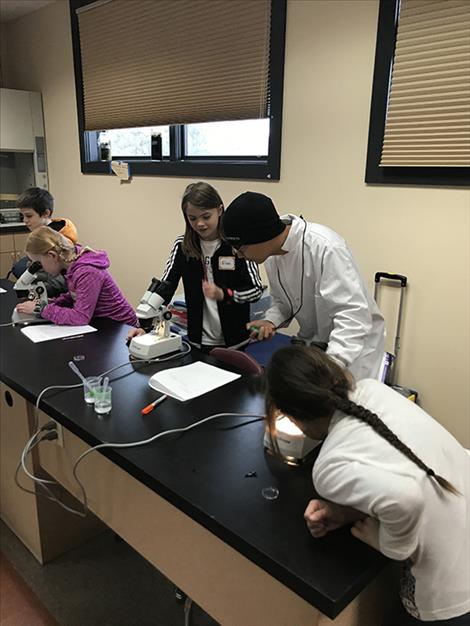SKC program allows children to study heartbeats
Hey savvy news reader! Thanks for choosing local.
You are now reading
1 of 3 free articles.
PABLO – The science laboratory at Salish Kootenai College was recently filled with elementary students, all of whom had their eyes glued to their microscopes as they counted the number of heartbeats Daphnia, or water fleas, had for 20 seconds. This science experience emphasized that research is for everyone, even children. During their week of scientific outreach, the STEM Academy hosted four elementary schools in the Mission Valley, reaching 140 students.
“These organisms are important,” stressed Kiana King, a first-year SKC high school STEM Academy student, to a class of Polson Elementary students. “These little guys are alive, and they are important to the ecology. They deserve respect, and we are going to try to be as gentle with them as we can.”
Before the experiment began, the STEM Academy students explained the important ecological role of Daphnia, as well as their value as model organisms in science research. Daphnia are small aquatic crustaceans that live in freshwater lakes, ponds and streams. Not only do Daphnia provide a food source to larger organisms, they are also important bioindicators of the health of their environments.
Due to their size and ease of care, Daphnia are important model organisms as they allow scientists to explore scientific systems, such as the lab performed by elementary students at the SKC STEM Academy. This experiment was no easy task. Daphnia heart rates can be up to 300 heartbeats per minute, but with the help of microscopes provided by Linderman Elementary School, the elementary students were able to perform the challenging experiment.
Once the elementary students learned how to count the heartbeats and properly use their microscope, they investigated how caffeine or ethanol affected the heart rate of their Daphnia. After data collection, students were guided through the calculations needed to generate a bar graph to visualize their findings.
SKC STEM Academy is a dual enrollment program made possible through the generous funding of a Science Education Partnership Award from the National Institute of General Medical Sciences at the National Institutes of Health as well as Tribal Colleges and Universities Program grant through the National Science Foundation.
The academy offers science, technology, engineering and math courses to high school students in the Mission Valley and emphasizes outreach to the community and local schools. While in this program, junior and senior high school students attend high school in the morning then attend SKC in the afternoon. The courses that they take provide credit for both high school and college, allowing them to get an extra boost as they transition into college.

















